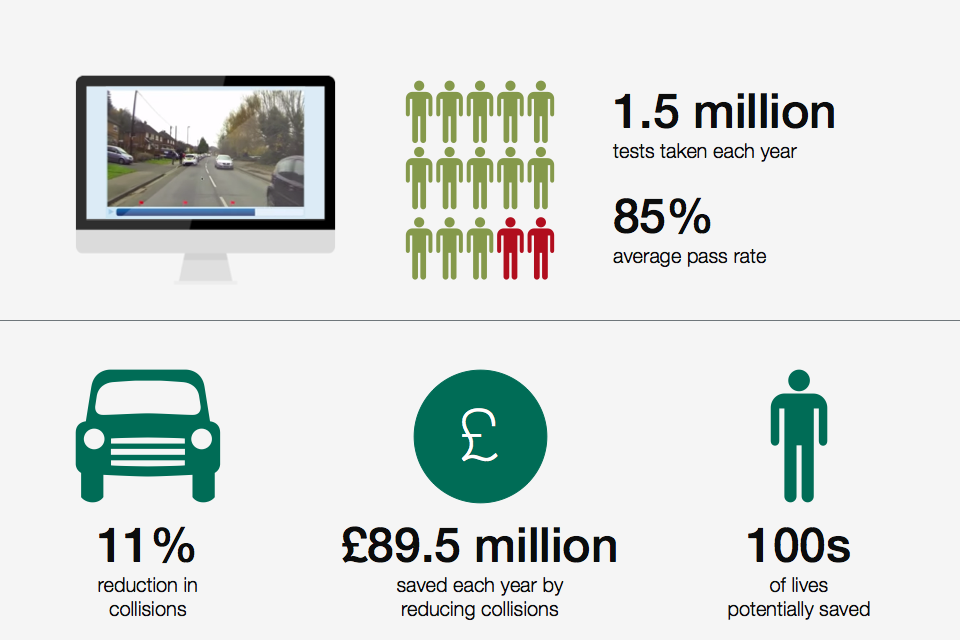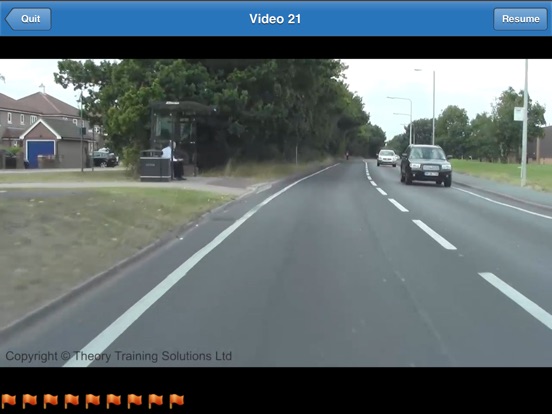

#ROAD HAZARD PERCEPTION TEST HOW TO#
The hazard perception test lasts for approximately 20 minutes.īefore the start of the test, an introductory video will be played (shown above) explaining how the test works and giving you instructions on how to complete the test. You aren’t permitted to leave your seat during this break. There is an optional three-minute break between the tests, which you are advised to take to allow time to compose yourself. A pedestrian who does not cross the road, for example, is a potential hazard and if you highlight this in the clip, you will not score any points for doing so.The UK driving theory test begins with the 50 question multiple choice section, followed by the hazard perception test. Learn the difference between a potential and a developing hazard You only score points for identifying developing hazards, however, all clips have potential hazards for which you do not score points for. You score points for identifying a developing hazard, however, if you click too early, you will not score any points for the clip, as you are only awarded points for clicks that happen in a set period of time. Thinking about whether a situation has the potential to alter your path, is key when analysing each individual clip. As a general rule, a hazard is anything that causes you to slow down, change direction or take evasive action. The first step to passing this test is to learn how to identify a hazard. To give you the best chance of passing, we have included our top hazard perception tips. The hazard perception test can be quite challenging, especially if it is your first time taking the test. Once you have worked through the previous chapters, you should be able to identify and respond to hazards in good time and this chapter will test your ability to do so. This chapter deals with responding to the different type of hazards you can expect to face while driving.

This chapter focuses on ways in which you can cut down on risks, such as keeping a safe distance from the vehicle in front, what to do when another vehicle enters your safety gap and how to drive in adverse weather. The number one objective of hazard perception is to keep you safe on the road and reduce the chances of you being involved in a collision with another road user. In such circumstances, you are required to prioritise which hazards you deal with first and this chapter teaches you the correct way to do so. On busy urban roads, hazards do not appear one after the other, you are often in situations where you are faced with several different hazards at once. This chapter teaches you how to scan the road as you drive and plan accordingly, therefore reducing the chances of you being caught out by a hazard. The key to efficient hazard perception lies in your ability to spot and react to the hazard in good time. This chapter teaches you how to react to hazards using the Mirror Signal Manoeuvre (MSM) routine, which is one of the core driving principles you are taught when you learn to drive with Book Learn Pass. Identifying and spotting a hazard is the first step in the process, however, you still need to respond and react to the hazard too. In this chapter, you will be taught how to identify clues that you could be approaching a hazard. It is impossible to predict exactly what will happen at any given time on the road, however, there are several clues and warning signs that we can use to prepare ourselves for a developing hazard. Identifying what is and is not a hazard, is the first step in the process. Some hazards are fixed such as a roundabout or pedestrian crossing, while others could be temporary, such as a bus at a bus stop. The chapters in the guide are as follows Defining hazardsĪ hazard can be defined as anything which causes you to alter your speed or change direction. There are 7 chapters in the official DVSA hazard perception guide and these chapters are designed to teach you how to identify, react to and plan for developing hazards. Each driving course we offer has a number of driving lessons dedicated to planning, identifying and reacting to hazards. It is important you learn how to spot and deal with hazards in good time, as this will keep you safe while behind the wheel. Preparing for this test is an important part of learning to drive. Why is the hazard perception test important?

There are 75 marks available in total and to pass the test, you must score at least 44/75. You score points based on how early you spot a developing hazard, however, you only score points once the hazard actually begins to develop. There are 5 marks available for clips with one hazard and 10 marks available for the clip with 2 hazards. There are 14 clips in the hazard perception test and each clip has at least one hazard, while one clip has two hazards.


 0 kommentar(er)
0 kommentar(er)
